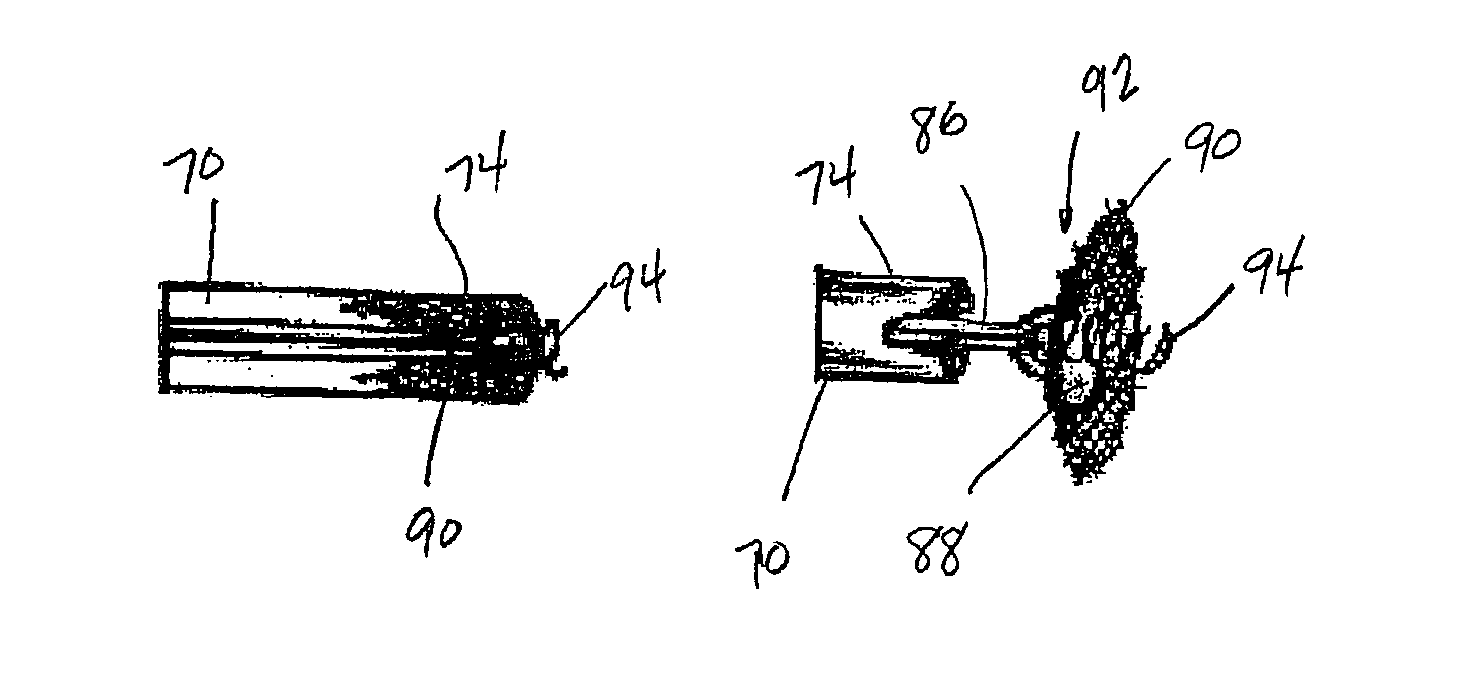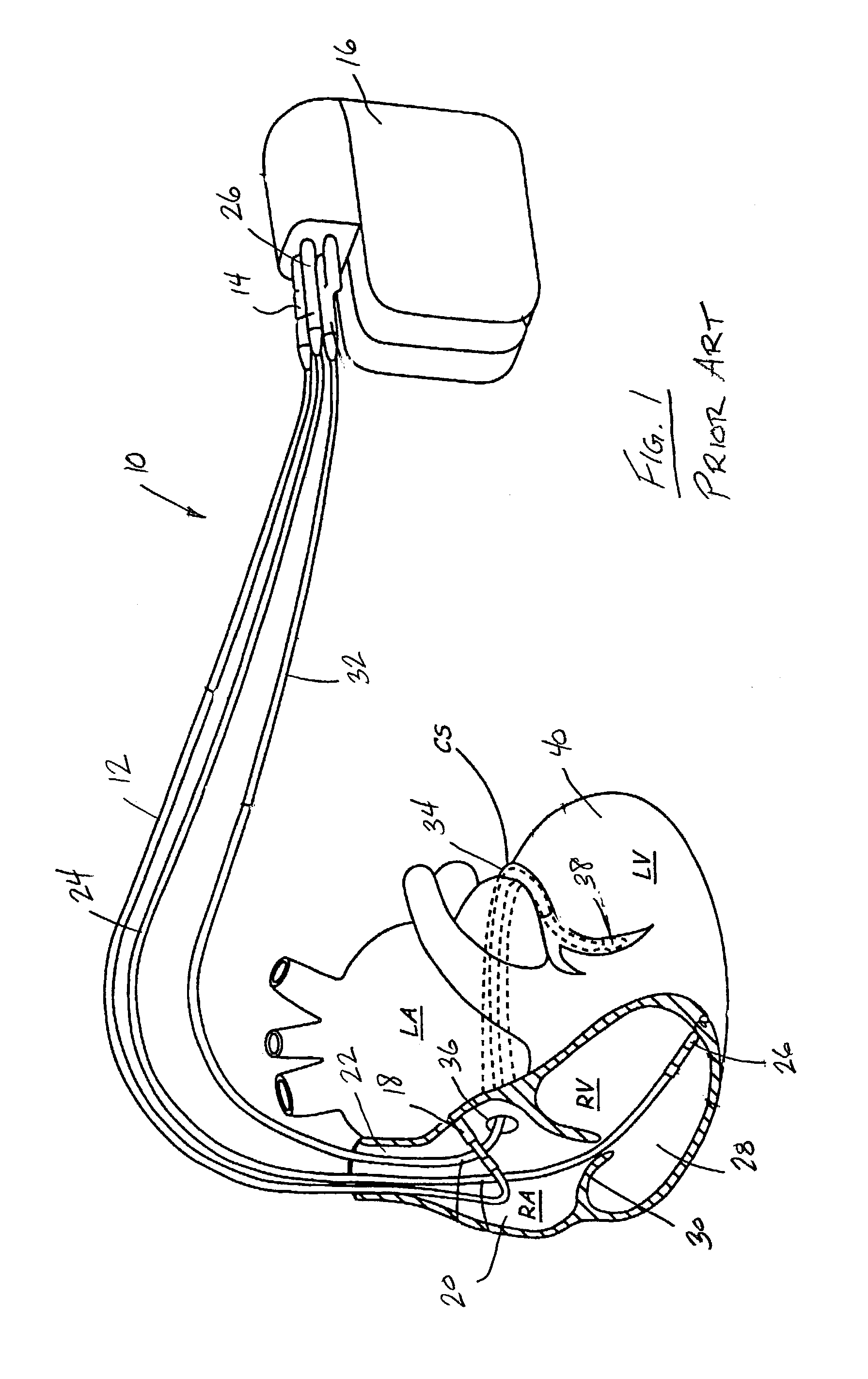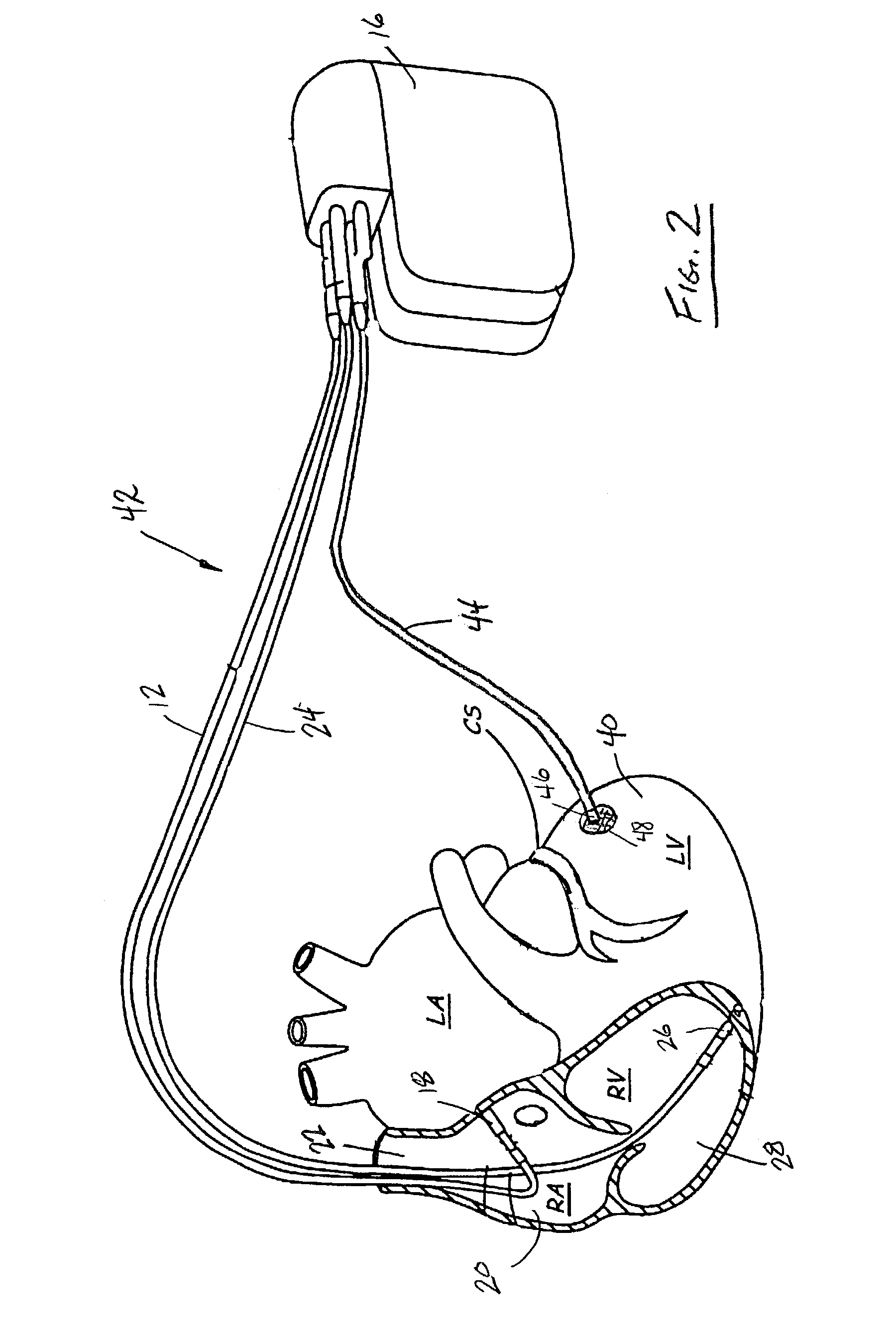Epicardial lead placement for bi-ventricular pacing using thoracoscopic approach
- Summary
- Abstract
- Description
- Claims
- Application Information
AI Technical Summary
Benefits of technology
Problems solved by technology
Method used
Image
Examples
Embodiment Construction
[0030]Referring first to FIG. 1, thereshown is a schematic illustration of a prior art bi-ventricular pacing method and apparatus 10 currently used. The bi-ventricular pacing system 10 shown in FIG. 1 utilizes a totally transvenous lead system. Specifically, a right atrial lead 12 has one end 14 connected to a pacemaker 16 and a distal end including an electrode 18 in contact with the inner wall of the right atrium 20. As illustrated in FIG. 1, the right atrial lead 12 is fed into the heart through the superior vena cava 22.
[0031]A second, right ventricular lead 24 is coupled at its end 26 to the pacemaker 16 and its distal end, including a electrode 26 is placed in contact with the inner wall of the right ventricle 28. The right ventricular lead 24 also passes through the vena cava 22 and passes through the tricuspid valve 30. The third lead 32 of the pacing system 10 passes through the vena cava 22 and enters into the coronary sinus 34 through the opening 36 in the right atrium 20...
PUM
 Login to view more
Login to view more Abstract
Description
Claims
Application Information
 Login to view more
Login to view more - R&D Engineer
- R&D Manager
- IP Professional
- Industry Leading Data Capabilities
- Powerful AI technology
- Patent DNA Extraction
Browse by: Latest US Patents, China's latest patents, Technical Efficacy Thesaurus, Application Domain, Technology Topic.
© 2024 PatSnap. All rights reserved.Legal|Privacy policy|Modern Slavery Act Transparency Statement|Sitemap



